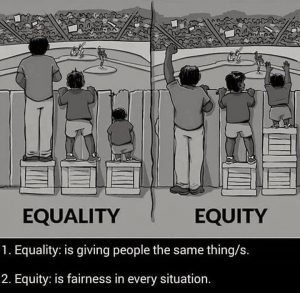
Designing for inclusion is important not only for educational contents, but also all online contents in a general sense. This is because the internet is so popularly used that for many people, being online to talk to people, read news, get informed, work and study is part of their life and work. Under this circumstance, online contents should be made available for everyone because each web-user has the right to get access to online contents. This is more urgent now than ever for universal design for online contents as we are kind of forced to enter an era where we work and study online.
In my personal experiences with online learning, most of them are pleasant and I am aware that this is because I am lucky to not have certain disabilities that would prevent me from accessing to certain forms of learning contents. However, there are a considerable among of people with various disabilities that may have much trouble learning with this form of learning. I could imagine that they also have various problem accessing other online information such as news or entertainment contents.
When answering how to ensure that all learners needs are met, I think it is necessary to address the importance of inclusive design for every content designer in the first place. It is because we could easily ignore things that we do not know, or things that we do not care about. The video that demonstrated “selective attention test” proves this point by showing that people tend to attend for things where they set their minds to. It is easy for the content makers to neglect the needs of the minorities and thus bringing them to the attention is the first step to ensure that the learners needs are met. What comes afterwards, is the guideline or framework which could give content creators a standard to follow.

In our group learning activity design, we have many readings and videos to demonstrate the key ideas and concepts. What we could do to reduce barriers for certain leaners is to make the contents into more forms of multimedia contents. For instance, when we only have texts in some reading materials, we would try and make them into audios and comics to meet the needs of learners who may have visual or reading problems. The videos we use would have subtitles for people with hearing problems.
The current design is assumed to be online and to reduce barriers apart from what were mentioned above, we also plan to do test learning where we has friends to test the design and make adjustments according to the advice. We would also try and add community factors in the learning for real-time problem discussing and solving.
References:
UVic, E. D. C. I. (2022). Universal design. EDCI 335. Retrieved October 24, 2022, from https://edtechuvic.ca/edci335/universal-design/
UVic, E. D. C. I. (2022). Inclusive learning design. EDCI 335. Retrieved October 24, 2022, from https://edtechuvic.ca/edci335/inclusive-learning-design/
Replying peer post:
Recent Comments